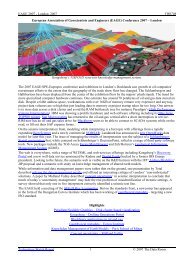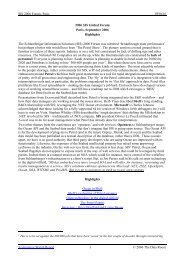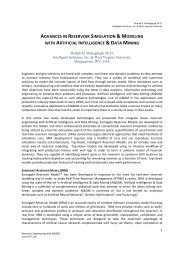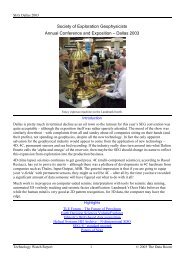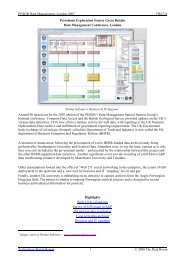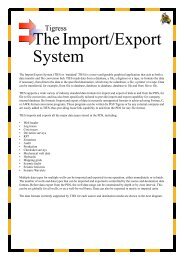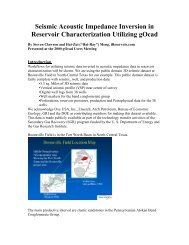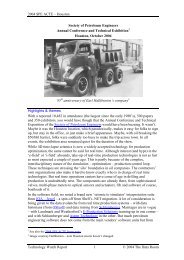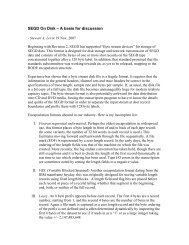AspenTech EU User Group 2003 - Oil Information Technology Journal
AspenTech EU User Group 2003 - Oil Information Technology Journal
AspenTech EU User Group 2003 - Oil Information Technology Journal
You also want an ePaper? Increase the reach of your titles
YUMPU automatically turns print PDFs into web optimized ePapers that Google loves.
Aspen Tech European <strong>User</strong> <strong>Group</strong> <strong>2003</strong><br />
clear opportunity to reduce gas lift to some wells to optimize production. This is a ‘classic’ coupled<br />
problem between facility and well–related variables.<br />
Pompano – division of labors<br />
EXCEL HYSYS GAP<br />
| | |<br />
Excel model built by MDC to control<br />
HYSYS and GAP opposite.<br />
GAP is embedded into HYSYS and<br />
shares variables.<br />
Case history Valhall optimization<br />
Topside<br />
Petroleum Experts tool for well<br />
performance optimization (GAP<br />
aggregates Prosper models which<br />
are ‘very popular’ in BP)<br />
Valhall is a mature North Sea asset producing 100kbpd from 38 wells. Two HP/LP compression trains<br />
with 7 stages of compression reflect incremental design creep and are perhaps the most complex facility<br />
ever! Process from remote tie-back again demonstrates slugging. The study was performed by MDC.<br />
Valhall benefited from a good infrastructure for online optimization with good bandwidth and metering.<br />
MDC could observe operations in real time. The complex constrained compression system was the target<br />
for optimization by making space for production in the compression system. A tax on produced CO2 was<br />
also an issue. The optimization boiled down to 6 numbers that operators need to track. Success factors<br />
included accurate asset models of wells and facilities based on tools of choice: Pipesim, HYSYS, Prosper<br />
GAP. A consistent data set for validation was also key. Optimizing linked black oil and compositional<br />
PVT models was a non trivial problem – models need to be ‘robust and available’ since optimization<br />
cannot halt operations. People and process proved more complex issues due to the cross-disciplinary<br />
nature and ownership of the project.<br />
In fact both of these projects have ‘struggled’ to provide value for BP because of people issues. Valhall<br />
optimization potential is significant–but operators have not taken much notice because the project did not<br />
have buy-in from day one. The reaction tended to be ‘very interesting–now let me get on with my job 4 .’<br />
The Valhall control room is moving onshore and it should be easier to manage optimization. Operators<br />
need training and there needs to be a clear offering – perhaps a performance contract including a 2%<br />
production hike. SimOpt needs to be delivered ‘at pace’, worldwide and for multiple assets. There is a<br />
need for ‘plug & play’ models integrating technology and commercial issues. Steady-state and dynamic in<br />
one model, Smarter optimization MINLP 5 , analytical derivatives and ‘models that answer questions that<br />
have not been asked yet’ are aims.<br />
Q&A<br />
Q – Is the reservoir modeling community involved?<br />
A – Yes, we talk to them although the timescale is different. It is an interesting dialog but we<br />
really need a new tool to optimize across different disciplines and time scales.<br />
4 Stenhouse also indicated that operators were concerned with potential gas blow-by as assets were driven closer to the edge.<br />
5 Mixed Integer Nonlinear Programming.<br />
<strong>Technology</strong> Watch Report 4 © <strong>2003</strong> The Data Room




